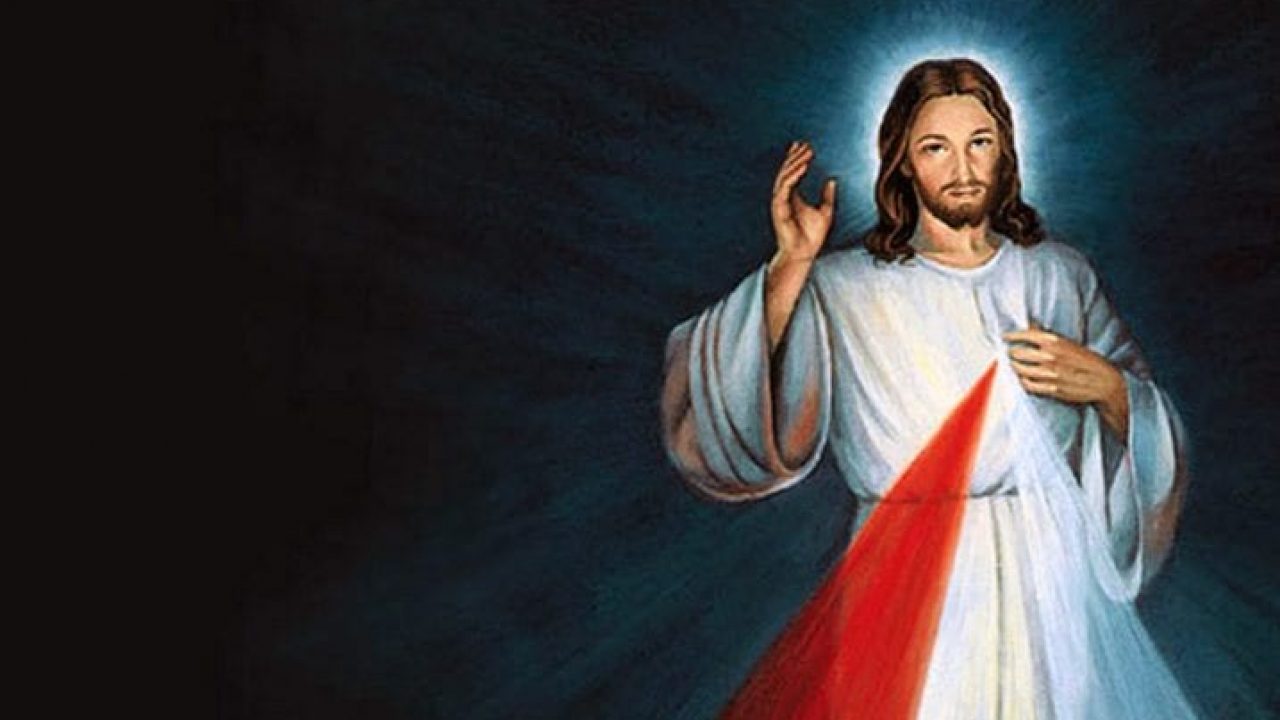Lord, Have Mercy!
2nd Sunday of Easter: Divine Mercy Sunday
The Sunday after Easter is known as the Sunday of Divine Mercy, a title bestowed upon it by Pope St. John Paul II in the year 2000. It’s not hard to imagine why; the Mass readings speak directly to the mercy of God. The first reading tells of the Apostles curing the sick (Acts 5:12-16). The Psalm speaks of the Lord’s mercy enduring forever (Ps 118). And the gospel recounts how the Risen Jesus gave the Apostle the divine authority to forgive sins (Jn 20:19-31). But the more specific reason why this Sunday is celebrated as Divine Mercy Sunday has to do with a vision received by an uneducated Polish nun named St. Faustina Kowalska.
Between the years 1931-38, Sister Faustina repeatedly received visions of Jesus imploring her to spread a special devotion to His Divine Mercy. The well-known Divine Mercy Chaplet and the image of the Divine Mercy showing rays of red and white light coming from the heart of Jesus were given to St. Faustina during these visions. She was also instructed to ask the Holy Father to establish a feast celebrating the Divine Mercy on the Second Sunday of Easter; a request later fulfilled by the Polish Pope, John Paul II.
We have instructions on how to pray the Divine Mercy Chaplet on our website (you pray it with regular rosary beads). If you want to learn more about St. Faustina Kowalska and the Divine Mercy devotion, you can visit www.thedivinemercy.org.
At the request of her religious superiors, St. Faustina wrote down the details of her visions in a diary that was posthumously published under the title Divine Mercy in My Soul. It makes for wonderful spiritual reading. But you don’t need to read the diary to understand the basic message, which can be summed up in three brief points:
- Ask for God’s mercy
- Be merciful to others
- Trust in Jesus
What is mercy? If we are going to ask God for mercy, and if we should be merciful to others, we ought to know the answer to that question. In Latin, the word for “mercy” is misericordia, which literally translates as “a heart for misery,” or “a heart for suffering.” In other words, someone who is merciful has a heart that is drawn toward those who suffer. Jesus has a heart like this. He was drawn so much to our suffering that he came all the way down from heaven to suffer with us.
Most of us, I think, tend to equate God’s mercy with His forgiveness. This is certainly a big part of it. Sin causes us suffering in this life and if we don’t repent it leads to eternal suffering in hell. To alleviate the suffering of sin we need divine forgiveness, which God is quick and ready to offer. This is why Jesus asked St. Faustina to have a feast to his Mercy established on the 2nd Sunday of Easter; the Sunday on which we read the gospel reading telling of the establishment of the Sacrament of Penance, aka Confession — the sacrament of God’s mercy.
But mercy is more than forgiveness. Mercy, broadly understood, means “help.” When you have a heart for suffering, you want to help those in need, whatever the need may be. Very often what we need from God is forgiveness, but at other times it is comfort, consolation, encouragement, affirmation, or peace. On the other hand, sometimes what we need most is admonishment, warning, redirection, or reproachment. To put it another way, sometimes we need a good, swift kick in the you-know-where to set us on the right course. That, too, is a mercy.
I had a beautiful experience at the start of a personal retreat I took last summer. I was exhausted and stressed out and worried about many things (which is why I was going on retreat). As soon as I arrived at the retreat center, I dropped my bags off in my small room and made my way down to the chapel to pray Evening Prayer. As I opened my prayer book I looked up at the crucifix and prayed silently, “Lord, have mercy.”
As soon as I said that prayer, I received a message in my heart loud and clear from Christ as he looked down upon me from that cross: It’s all mercy.
All the suffering that our Lord endured for us on the cross is mercy. But so is the air we breathe. So is all the different circumstances of our lives. So is all of our hardships and trials, the many crosses we bear, the people in our lives, and all the consolation our Lord offers us. It’s all mercy, because it’s all from God who wants nothing but our good. Realizing that, I found myself filled with an immediate and overwhelming sense of calmness and peace. It’s all mercy.
This is why the third and final point of the Divine Mercy message is to trust wholeheartedly in Jesus, and why the image of the Divine Mercy always includes the words, “Jesus, I trust in you.” To trust in Jesus means trusting in his mercy and his love for each and every one of us, even (and especially) in our trials.
It’s all mercy.
So pray the Divine Mercy chaplet. If you don’t have time for that, pray, “Lord Jesus Christ, only Son of God, have mercy on me, a sinner.” If you don’t have time for that, just pray, “Lord, have mercy,” or “Jesus, I trust in you,” and follow through with those words by trusting in the mercy of God.

